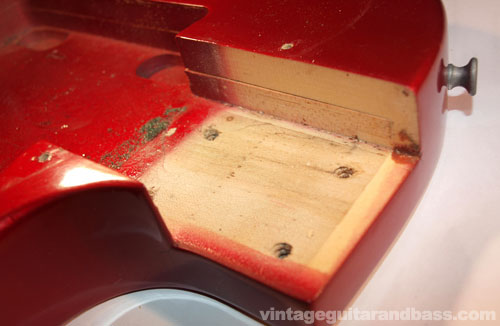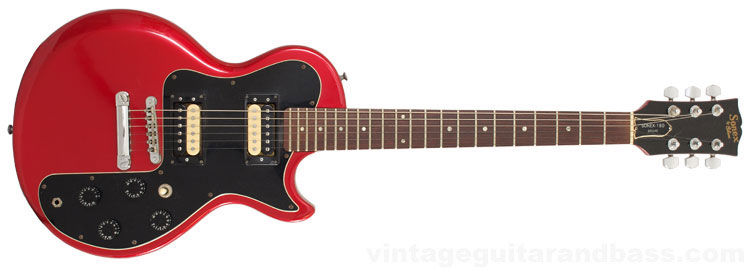
Model: 1982 Gibson Sonex 180 Deluxe
Scale: 24 3/4"
Body: Multi-phonic body, dimensions 17 1/4" long, 13" wide and 1 3/4" thick
Neck: Three-piece maple neck, rosewood fingerboard with dot position markers
Weight: 4.0 kg
The Gibson Sonex-180 Deluxe was available from 1980, in semi-gloss Ebony finish only, with new finishes gradually added over the next three years. 1982 was the first year for the very fetching high gloss Candy Apple Red finish shown here.
The Deluxe was the entry level model in the Gibson Sonex range; it had a good finish and the same construction as the Standard and Custom, but had cheaper imported hardware, including pickups. It was a good guitar for the money, but then it was the cheapest guitar in the June 1982 price list by a long way, at just $349 (semi-gloss black finish) or $399 (gloss finishes). At this time, however, the Sonex Standard and Custom had both recently been deleted, leaving the The Paul Deluxe as Gibson's next cheapest solid body at $629.
The 1980 '
Gibson Guitars' booklet was the only US Gibson Catalog to include the Gibson Sonex series of guitars
Despite having the classic Les Paul single cutaway shape, these guitars were a completely different instrument to an actual Les Paul, being constructed entirely differently, and out of entirely different materials. They did share some of the same styling, including pickup and control configuration, but the pickups, described as 'exposed coil high output', are not the Velvet Brick pickups they are often confused with (more below).
Gibson guitars could not just be sold by anybody; dealers had to be authorised to stock Gibson, however the new Sonex guitars were authorised separately; theoretically stores that did not stock other Gibson guitars could sell Gibson Sonexs. Consequently, Sonex guitars were branded somewhat differently to regular Gibson models: most usually pegheads would display 'The Gibson guitar company USA' but for a brief period in mid 1982, many were branded 'Sonex by Gibson' as is the case here.
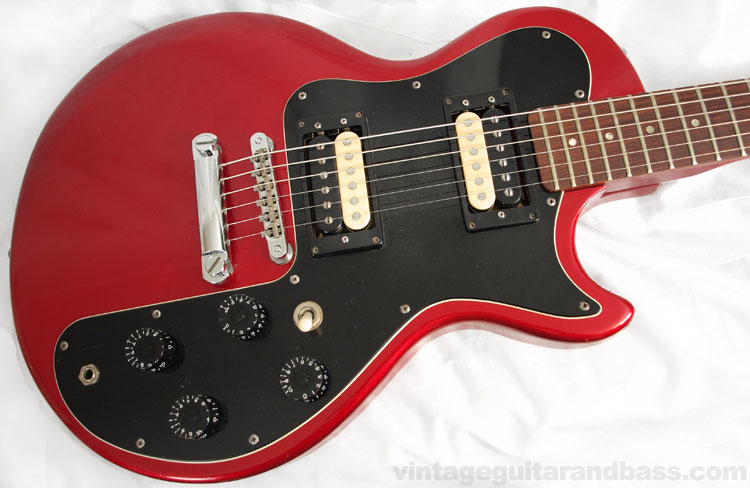
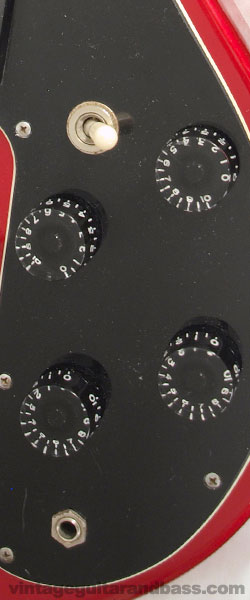
The Sonex Deluxe controls are the standard volume and tone for each pickup and the three way pickup selector switch (neck/both/bridge) of most Gibson guitars. It has the speed knobs fitted to most solid body Gibsons of the time; in appearance anyway. In fact the Sonex control knobs are everso slightly different, with a different part number, but also significantly cheaper in the spare parts catalogue.
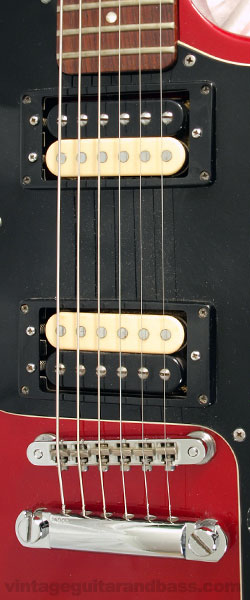
The
Sonex Deluxe humbuckers have the contrasting black and cream revealed coils. Unusually for Gibson, they were imported from Japan rather than wound in the USA. Parts 13248 (front) and 13249 (back). Three adjustment screws (two at the top, one at the bottom) change the height and angle of the pickup, relative to the scratchplate.
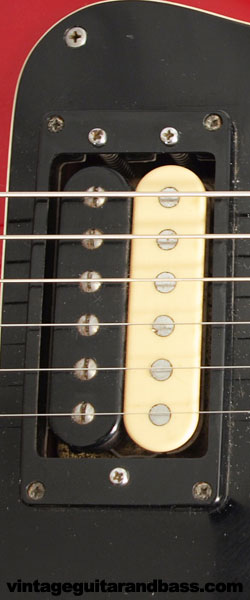
Close up of the bridge pickup. Each pickup has six adjustable polepieces in the black side of the pickup. Turning these adjusts the height of the polepiece relative to the strings, and increases or decreases the signal from each string.
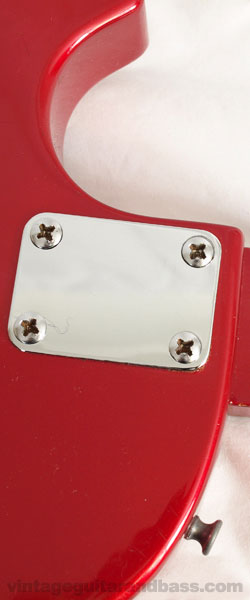
Like the majority of bolt-on neck guitars, the Sonex has a chrome plated heel plate, but without any markings, Gibson logo etc
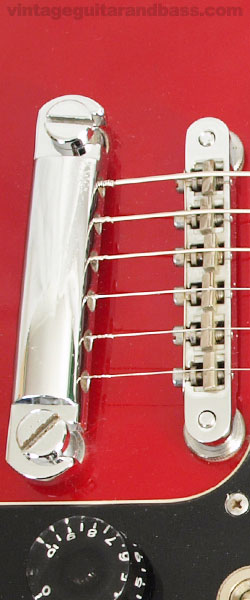
The Sonex-180 deluxe was fitted with a bridge (part 10196) and stop tailpiece (part 81563) made in Japan. The bridge is mounted via the same 'sustain sister' bolts screwed into the body that also adjust bridge height.
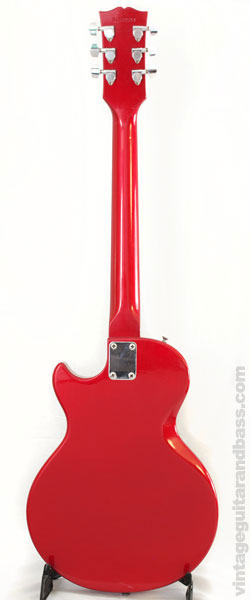
Reverse body view, showing heel plate and body contours. Unlike many earlier bolt-on neck Gibson's, the Sonex series had a painted rather than clear-coated neck.
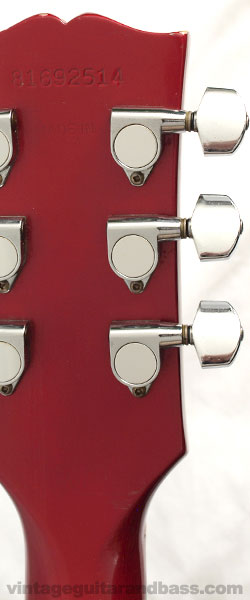
The back of the headstock shows the serial number, and very faintly 'MADE in USA' below. The serial number 81692514 tells us that this bass was stamped on the 18th June 1982 (day 169), at the Gibson Nashville plant, and was the 14th instrument stamped that day. Tuning keys are Japanese, Gibson part number 82598.
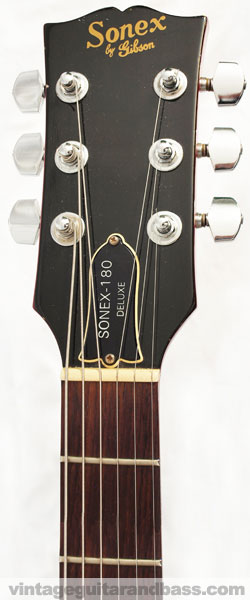
The headstock logo is silk-screened 'Sonex by Gibson' which was used only for a short period in mid-1982. Before and after this time, most Sonex guitars were marked 'The Gibson Guitar Company USA'. The two-ply truss rod cover holds the model designation. Note it is attached via two screws; most earlier examples used three.
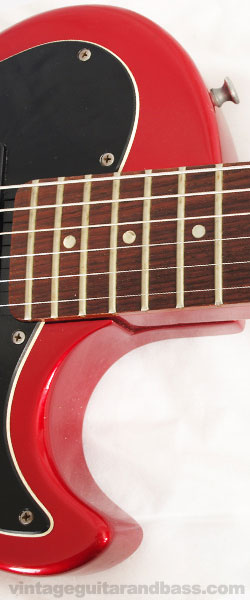
Rosewood fingerboard with dot neck markers. The bolt-on maple neck joins the body at the 16th fret. Note the scratchplate, like the truss-rod cover is also two-ply.
Bolt-on neck Gibson guitars are typically unfinished in the neck pocket, in this case giving a good view of the hardwood maple core and resonwood surround. Early Sonex product descriptions suggest a one-piece maple neck, however this neck is made of three-pieces of maple.
Each guitar in the Sonex-180 range (Deluxe, Standard and Custom, not Artist) has an identical body, only fitted with differing components. The un-assembled body is shown below.
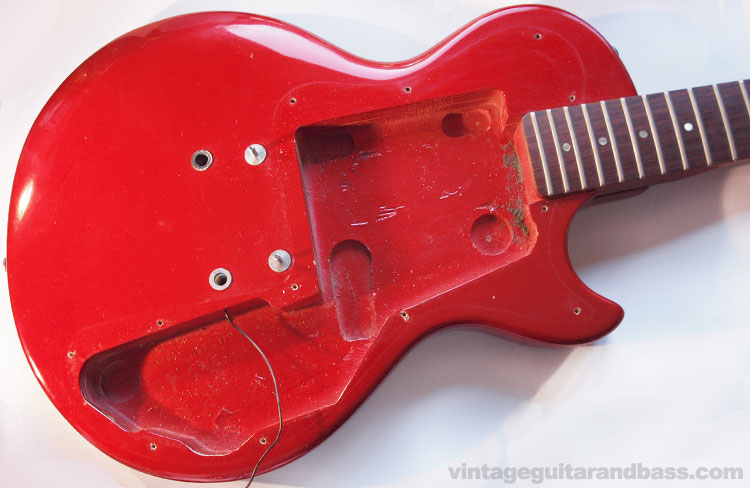
Got an opinion on the contents of this page? Disagree with something written above? Please
comment



